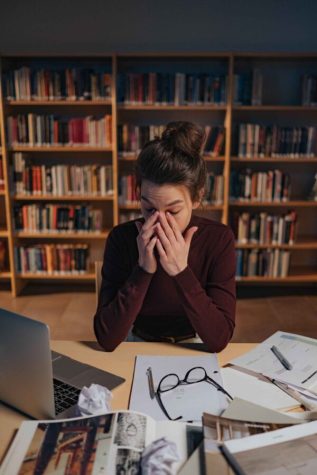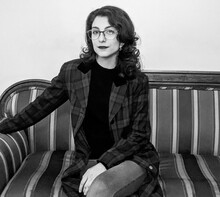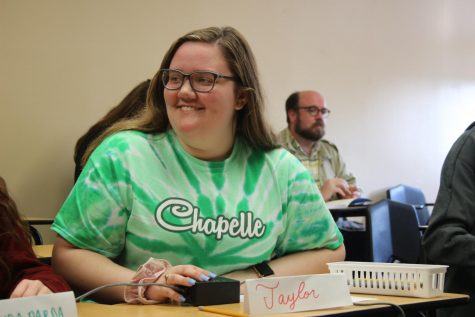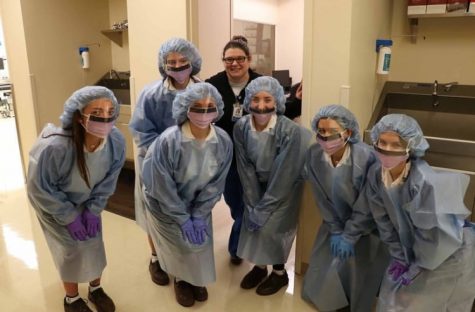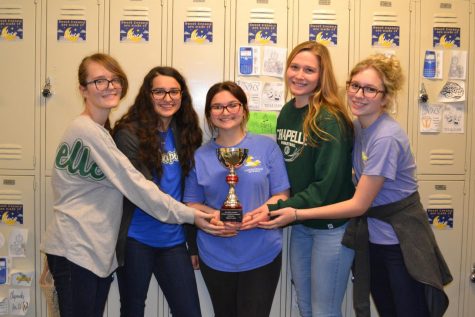Abp. Chapelle: ‘Goggling’ Beats Googling Hands Down
January 10, 2019
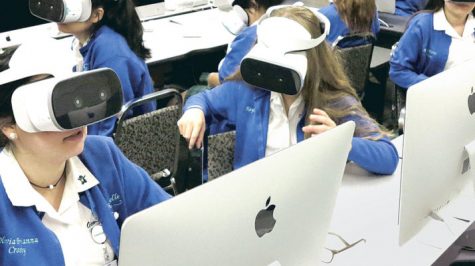 Imagine standing in the middle of the Serengeti in southwestern Kenya without ever leaving Metairie.
Imagine standing in the middle of the Serengeti in southwestern Kenya without ever leaving Metairie.
That is the experience now possible for high school students at Archbishop Chapelle High School in Metairie since the new Lenovo virtual reality lab – complete with 30 wireless goggles, hand controllers and teacher tools – debuted in October.
“We can travel the world in one day. We have already,” Danielle Rohli, Chapelle’s environmental science teacher and department head, said. “I’m exhausted.”
Eighth graders to seniors are using this virtual reality technology in all subjects across the curriculum.
One of the first uses of the Lenovo goggles was with seniors in an environmental science class. Rohli took students across the globe to show the destruction of the environment and wildlife due to pollution, the spread of humans in cities and the development of major resources.
“The Serengeti is famous for its rolling savannahs and animals including lions, giraffes, wildebeests, cheetahs and hippopotamus,” said Rohli as she read from her Lenovo tablet while students walked around Serengeti National Park.
She mentioned how giraffes are now a vulnerable population due to overhunting and poaching. The British government, which once ruled this land, created 5,700 square miles of grasslands as this wildlife preserve in 1951.
“Save the giraffes,” said one student who was saddened to hear about the reduction in the giraffe population.
Rohli brought them to places having other obvious signs of environmental destruction due to pollution of soil, water and air. They dove into the Blue Lagoon and walked near a geothermal power plant in Iceland.
“Geothermal energy is a form of what type of energy? Renewable or non-renewable?“ Rohli asked.
“Renewable,” the girls shout.
Rohli could see on her tablet exactly where students were looking – in a 360-degree radius – with their 3-D goggles and could guide them with an arrow.
“(The goggles) lend themselves to science,” Rohli said. “We saw one program that shows a live heart beating. The students are getting more than just seeing something.”
Giant leap in technology
Susan Panzavecchia, associate principal, said Chapelle has been pushing for teachers to more actively engage students in multi-faceted learning in the classroom. When researching this technology as a classroom tool teachers could use, its ability to be used across the curriculum was revealed. She believes Chapelle is the first school in Louisiana to use this.
“We first got interested in these (goggles) because of the STEM component related to our science curriculum,” Panzavecchia said. Their software has a big STEM component to it, and we thought taking it a step further would be to do it with the kids and virtual reality. We try to give them every tool we can to make the classes interesting and the students stay engaged. With this, they stay engaged.”
The students are excited about the technology and think it will improve their comprehension of classroom learning.
“I think it’s really cool because you can go see stuff (in virtual reality) around the world without actually going there,” said senior Kayla Whitfield, who wants to be a neo-natal nurse. “I think it could help us remember things because as Miss Rohli points to things and gives us information, maybe seeing it in the real world will help remember it better.”
Rohli suggested what the technology could mean in the classroom in addition to all other forms of teaching. In science, instead of looking at the periodic table, virtual reality will allow students to click on an element and see real-life examples of what the element is used for in daily life. Eighth graders, who are learning about the human eye and refraction, can view exactly how refraction works within the human eye, taking what is learned in lectures and on white boards to another level. Students in art classes could view any museum in the world, and religion classes can go into the Sistine Chapel.
“We learn more and retain it when we use more than just one sense,” Rohli, a teacher with 18 years of experience, said. “So this is giving the girls an opportunity to experience our lessons more completely. Instead of just reading about things such as coral bleaching, they are able to see what it looks like … and see it next to healthy coral and compare the two. They are really able to experience it more than looking at a picture.”
Principal Leila Benoit said the ability to physically see something, such as a cell, in virtual reality is key.
“It is one thing to see a picture in a textbook or on a PowerPoint or draw it on the board or a 3-D model. They are actually going to physically be in it and see all the components of a cell and what that looks like. It is a very different, innovative experience for them … And it takes them outside of the classroom, even though they are physically still inside the classroom.”
“This will make students more excited about learning everything,” she said. “It makes school fun, and that’s difficult sometimes to do.”
Reprinted with permission from the Clarion Herald. The original article published on November 28, 2018 can be found here.



